Watering is essential for any landscape, but it’s at the top of the to-do list if you’re growing an edible garden. Most edibles require regular watering. If you live where summer rainstorms are common, Mother Nature might provide enough to keep everything happy. If you live in a dry climate, or are facing drought conditions, you’ll need to do more if you plan to keep growing.
For those of us dealing with water shortages, making the most of every drop becomes even more urgent. But you still have options. You can cut back on the size of your garden and look for varieties that thrive in naturally arid regions. While crops like broccoli and beans can be water hogs, peppers, squash, Swiss chard and tomatoes, especially ‘Early Girl’, ‘Sweet 100’, ‘Brandywine’ and ‘Burbank Slicing’, can handle less-than-regular watering once they’re established. Of course, herbs such as oregano, rosemary, thyme and lavender are staples of a drought-tolerant garden. Or maybe this is the summer you spend hardscaping and planning for next year.
No matter your climate, there are some watering guidelines that apply to any edible garden.
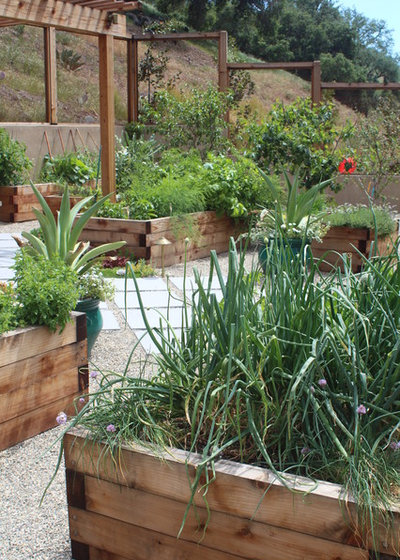
Carson Douglas Landscape Architecture
Water just what you need to. Granted, you don’t have that option when you’re relying on summer rains. But when you do water, make sure you focus just on the plants. This has the bonus of discouraging weeds; plus, sidewalks and patios certainly aren’t going to be growing and don’t need to be wet.
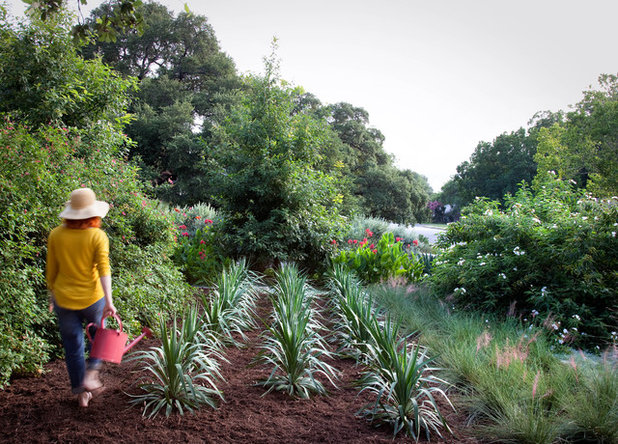
B. Jane Gardens
Water in the morning. Try to give plants a drink at the beginning of the day. Consider it your garden’s morning caffeine jolt. Being hydrated helps plants combat the heat of the day. It also gives the foliage time to dry in the sun, which helps prevent diseases.
If a morning watering session doesn’t fit your schedule, your next best choice is the evening, especially once things have begun to cool down. Be sure not to get foliage too wet, especially if your edibles are prone to fungus. At mid-day, water only the plants that are wilting significantly.
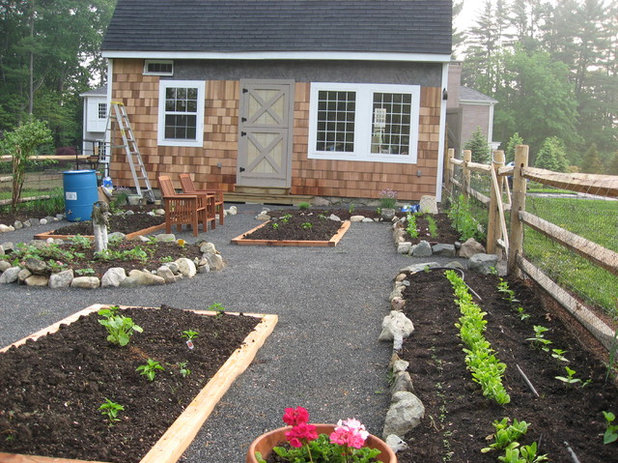 Water slowly
Water slowly. Spraying a full blast on a garden is more likely to wash away the dirt than provide the plants with enough water. Take it easy, and let the water fall gently on the soil and plants.
Water consistently. Plants do best when they’re on a regular schedule rather than a seesaw approach of overwatering followed by droughtlike conditions.
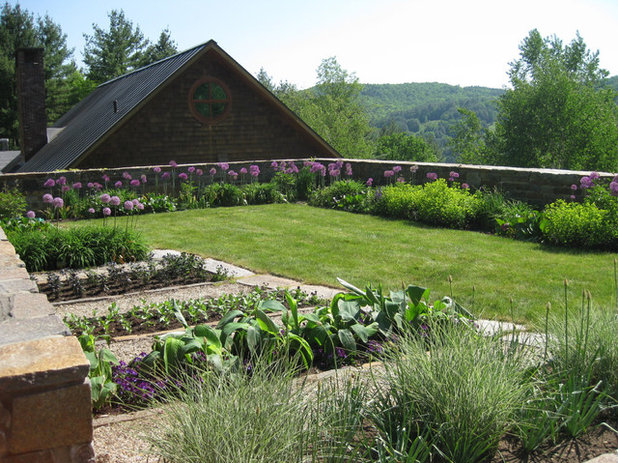
Saucier + Flynn, Ltd.
Water less often but deeply. The water needs to reach the deepest roots, which can be as shallow as 6 inches for radishes, around 1 foot for most vegetables, up to 2 feet for deeper-rooted plants like tomatoes and even deeper for fruit trees.
The general guideline is to water about 1 inch a week, but it can vary depending your plants, climate conditions (dry and windy versus still and humid) and soil type. Insert a thin rod or screwdriver into the soil next to the plants (be careful around the roots) an hour after watering to determine how deep the water has reached.
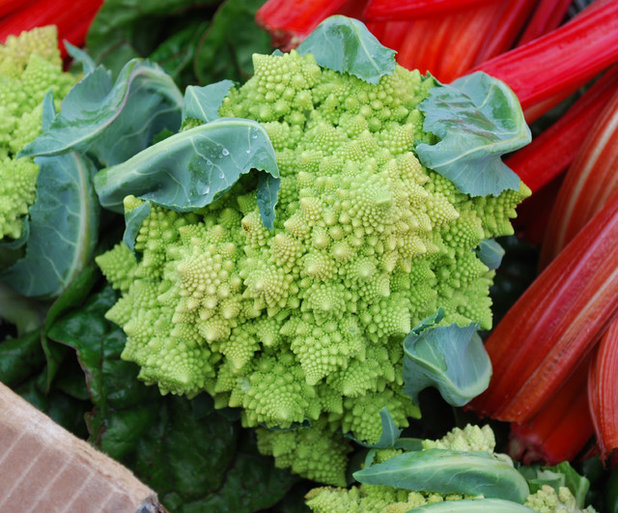
Jocelyn H. Chilvers
Know your plants’ water needs. As a rule, most edibles need regular watering and aren’t happy if the soil dries out too much in between. But that’s not true of all of them, so you may want to put some plants, such as herbs and even tomatoes, on a separate schedule in which you water less. At the same time, other plants, such as cole crops, might need extra watering sessions.
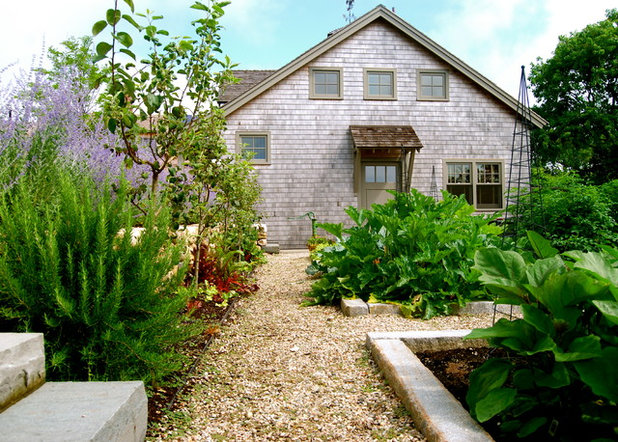
The Garden Design Company
Know your soil type. The ideal garden soil is a rich, easy-to-work loam that is porous enough for water to easily (but slowly) seep down, yet heavy enough to keep the water at the root level. If you’re lucky to have this soil, rejoice. The rest of us are jealous.
Sandy soil is just what it sounds like — very loose and porous. The good news is that sandy soil absorbs water easily. The bad news is that it also allows the water to quickly pass by the roots and drain away. If you have sandy soil, you’ll want to amend it. You’ll probably need to water more often to be sure the soil near the roots stays wet.
With heavy clay soil, you’ll water less often but you’ll need to make other adjustments. Because clay soil absorbs water very slowly, it’s easy for the water to run off before it penetrates the ground. The solution is to keep the flow low, almost a trickle if the soil is very dense. Also, try watering in two blocks — water for 5 to 10 minutes, turn it off for 20 minutes, then water again for 5 to 10 minutes. This allows the soil time to absorb the water.
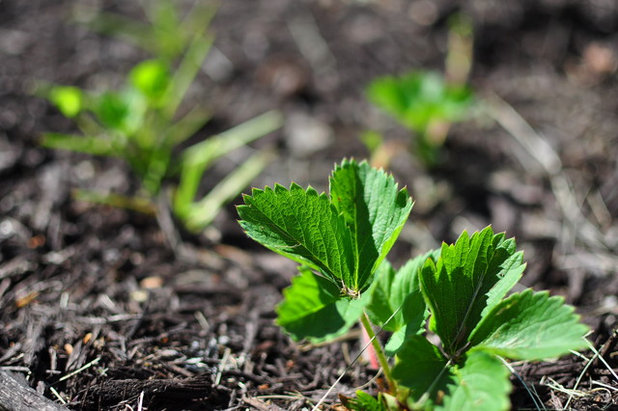
Amy Renea
Add mulch. Mulch helps to keep the soil cool and prevent evaporation while also deterring weeds. Once you’ve finished planting, add mulch around the beds. Just be careful not to put it too close to the plant stems or tree trunks.
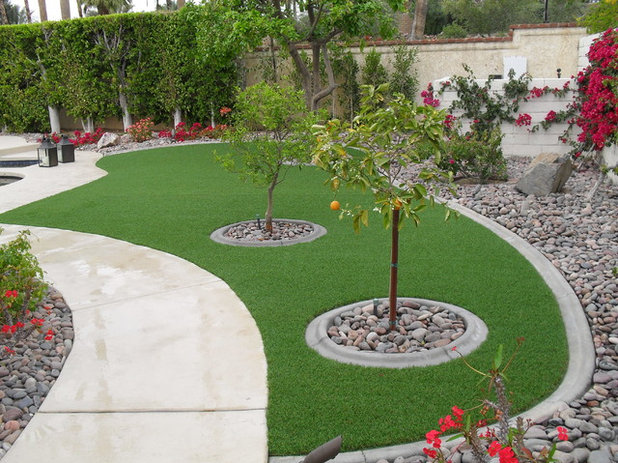
Back Nine Greens, Inc.
Beyond the BasicsAdd watering basins. Other options will also help you water efficiently and effectively. By filling watering basins around plants, especially fruit trees, you let the water slowly permeate the soil and reach the deepest roots without having to stand there holding a hose. Above-ground bags that fit around trees are becoming more common and allow you to do the same thing, especially for newly planted trees.
Consider covering larger watering basins with decorative rock, like the ones surrounding these trees. The stones allow water to permeate the soil while protecting the trees from lawnmower blades and adding a finishing touch to the landscape.
Create garden furrows. The traditional furrow alongside a row of vegetables serves the same purpose as a watering basin, allowing water to slowly reach the roots. Keep the furrow level so the water doesn’t pool at one end.
For both watering basins and furrows, be sure the water doesn’t sit directly against the stem of the plant or trunk of the tree. Leave a small dirt barrier between the two.
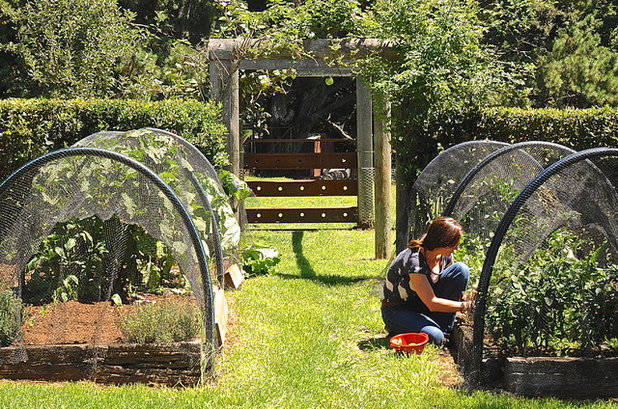
Luci.D Interiors
Plant just what you need, and group edibles with similar watering needs together. This applies especially if you want only a few plants, not an entire market garden. Create a separate herb garden, and consider planting beans, corn and squash together. (The beans use the stalks for support, and the squash leaves keep insects at bay.) Or keep shallow-rooted plants, like lettuces and spinach, in the same garden bed.
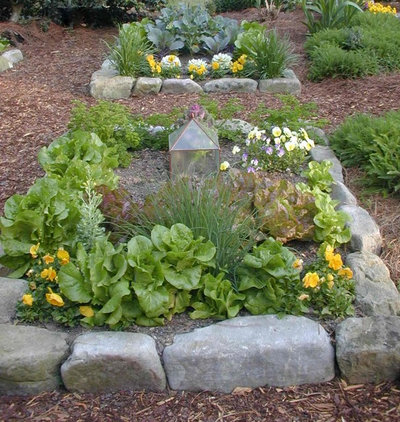
Home & Garden Design, Atlanta - Danna Cain, ASLA
Plant in blocks or squares. This configuration, as opposed to long rows, allows you to water more efficiently as well, with more water going to the plants and less being lost to evaporation. Mixing vegetables and adding in a few flowers, edible or not, can also help attract beneficial insects and deter problem pests.
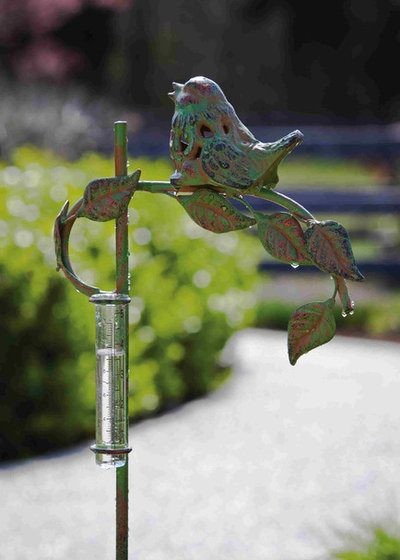
BuilderDepot, Inc.
Rain Gauge W/Garden Stake - $22.50
Monitor your garden’s moisture level. If summer rains are providing enough water to keep your plants happy, turn off an automated system or forgo a scheduled watering session. An old-fashioned rain gauge is one way to keep track of weekly rainfall.
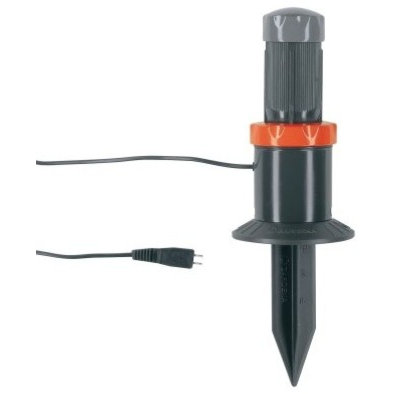
Hayneedle
GARDENA Rain Sensor - $49.99
For an automated watering system, you might want a rain sensor. Gardening supply stores, home improvement stores, nurseries and catalogs are good sources for easy-to-install sensors that can measure rainfall and turn off an irrigation system automatically.
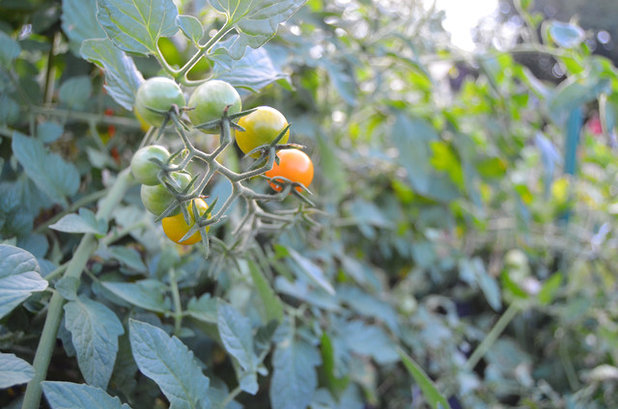
Amy Renea
Water most when the plant is growing. Cut back at other times. Most edibles need the most water when they’re flowering or fruiting. Cut back or stop altogether once the edibles have finished producing. The exception would be perennials or fruit trees, but even for those, you can cut back significantly when the plants are resting.





